Face-Off: Metro Redux
Cross-format analysis, plus original vs remaster comparisons on PC.
Some might say that Deep Silver did everything it could to address the various controversies surrounding current-gen console remasters with the launch of its remarkable Metro Redux. 4A Games handed in code that was a truly transformative experience compared to its PS3 and Xbox 360 predecessors, it significantly improved and modernised Metro 2033 and the publisher did its best to bypass the 'rip-off cash-in' arguments often levelled at remasters by bundling both games together in a retail package available in the UK for less than £30. But what about PC?
This one was always going to be trickier. Resolution and frame-rate boosts mean little to a PC audience accustomed to tweaking settings and upgrading hardware in order to get the gameplay experience it wants. The idea of value is wildly skewed in the world of Steam summer sales - and where the original version of Metro 2033 was at one point literally given away for free. Deep Silver hasn't actively marketed any game-changing improvements to Metro Last Light, while the revised version of Metro 2033 has been accused of being 'nerfed' owing to 4A opting to rely less heavily on volumetric lighting in certain situations.
In many ways, this is a dual-purpose Face-Off, then. Not only are we stacking up all three versions of the dual-game Redux, but the PC version - which also bundles up all of the existing DLC - clearly demands comparison to the existing editions of the game. That takes us up to ten different Metro versions we've played over the last month then, with plenty of discussion points still to cover, so let's dive in with the apparently contentious Metro 2033.
Alternative comparisons:
- Metro 2033 Redux: PlayStation 4 vs PC
- Metro 2033 Redux: Xbox One vs PC
- Metro 2033: Xbox One Redux vs Xbox 360 original
This is an interesting one. We've already compared the 2033 Redux to the original Xbox 360 version, but it's safe to say that the last-gen console edition was very much a sub-set of the PC original. Could it really be the case that Redux on PC is inferior to the original version? Well, what is clear is that 4A has turned off incidental features where the performance overhead did not justify the improvements in the visuals - a good example are the split-second shadows generated by muzzle flash from the view-weapon, which have been removed. Some volumetric lights are absent, while others are handled differently in the Redux (light shafts, for example). Part of the reason this article was delayed was because we heard from Deep Silver on Monday last week that last-minute tweaks to the PC version were being implemented. In the event, this took the form of a couple of inserted volumetric lights that actually seem to look a little at odds with the rest of the game.
Our opinion is that the idea of the 2033 Redux being nerfed holds little water once you take a look at the advantages brought to the table - over and above the revamped and much improved gameplay we've previously covered. From a technological perspective, the enhancements in the Redux are legion: there are higher resolution textures and greater texture variety. Depth of field is massively improved with superior transitions between near and far objects. Field of view has been tweaked for the better, while general shading has also been improved.
These elements apply as much to the console versions. However, PC gets an additional layer of features not found in the Xbox One or PS4 games: motion blur is included, which sees a boost over the older version (where artefacts on the effect were commonplace) while tessellation has been significantly improved. We've previously discussed how 4A has imported improved characters across from Metro Last Light, but it's also the case that many objects and pieces of scenery in the environments are replaced with different models, too. Specular elements in the visual make-up - the shiny bits, if you will - are enormously improved over the original game and stand apart from the console Redux too (where it seems only the view weapon gets the upgrade). Combine all of that with the gameplay enhancements, and the efforts 4A has made generally to harmonise Metro 2033 with its technologically more advanced sequel, and we have an outstanding piece of software.
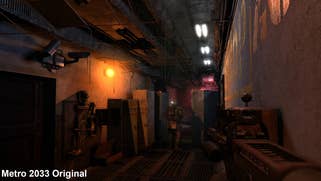
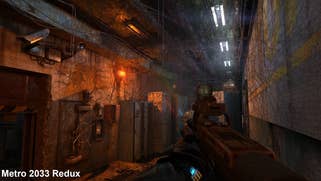
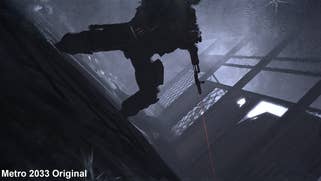

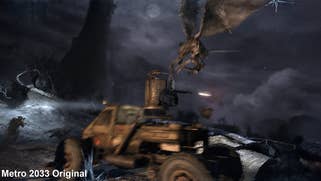



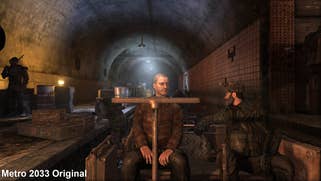
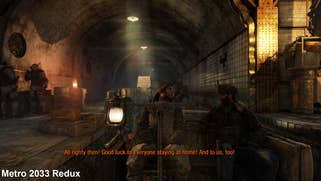



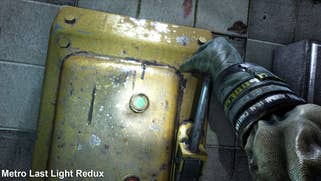

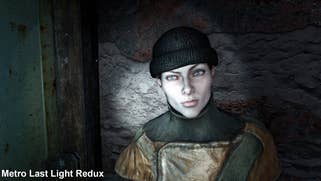

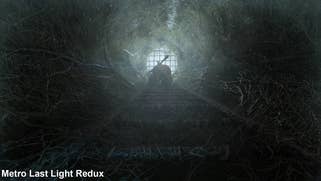
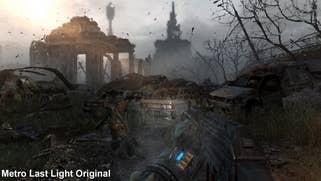
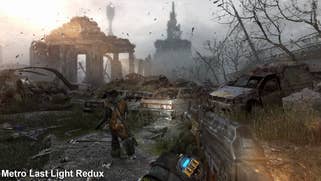
There are far more discussion points in comparing the two PC versions of Metro 2033 than there are when we look at the Xbox One and PlayStation 4 editions of the Redux, which are mostly the same. There's a resolution difference of course - 912p on Xbox One vs 1080p on PlayStation 4 - but owing to the muted colour palette, the 40 per cent resolution boost in favour of the Sony platform manifests as a slightly clearer image, where the difference only really comes to the fore on foliage in the brighter outdoor areas and when eyeballing high resolution textures up-close.
Much more noticeable is the impact of the anti-aliasing. Post-process anti-aliasing is employed on both versions, resulting in shimmer around moving edges. This is most pronounced on the lower resolution Xbox One version, but it is also visible on PS4. We mentioned previously that some of the leading lights in next-gen rendering are looking into new anti-aliasing techniques that seek to address this, something we hope to see in some of the new games arriving in Q4 this year (keep an eye on Far Cry 4 in particular). We're curious to see how the removal of temporal artefacting/shimmer impacts differences in resolution.
Other than that, the differences are minimal. Curiously, a red-tinted lens-flare effect seen in the Metro 2033 prologue scene is present on Xbox One and PC, but absent on the PlayStation 4 version of the game - a minor, fleeting curiosity that will almost certainly be patched. Other than that, the PlayStation 4 and Xbox One versions of the Metro titles are a match. We got the idea that maybe there were slight ambient occlusion differences - but owing to the constantly changing lighting, it's difficult to precisely nail down and may not be there at all. Certainly there is no major difference in overall presentation aside from the resolution difference and the resultant influence on anti-aliasing quality.
Alternative comparisons:
- Metro Last Light Redux: PlayStation 4 vs PC
- Metro Last Light Redux: Xbox One vs PC
- Metro Last Light: PlayStation 4 Redux vs PS3 original
Moving onto Metro Last Light, it's interesting to note that there are no further differences between the PlayStation 4 and Xbox One editions of the game. What is clear is that it is the more modern title, originally developed from the ground up with higher-level PC hardware in mind - and this manifests especially in terms of even higher quality texture detail, all of which carries across to both of the new-wave consoles. The real question is whether the upgrades make it a worthwhile upgrade for PC owners. Well, remember that all the DLC is bundled, but it is fair to say that while the 4A Engine enhancements are welcome, it is just an additional sheen of technical detail added to the title - not the game-changing leap seen when the title is compared between PS3 and PS4, for example.
Stacking up Last Light old and new on PC, we find that colours generally seem to be more intense, while textures appear sharper with more detail, perhaps down to an additional noise layer added to the art. Tessellation is improved and models appear more detail-rich with more folds in cloth, for example. In combination with the excellent motion blur, the overall impression is of a slightly richer, more accomplished PC version.
However, one of the biggest changes once again concerns the shiny specular elements. Many of the modern next-gen titles (Killzone Shadow Fall and Watch Dogs to name but two) employ an energy-conserving physically-based rendering model, which sees light bounce from objects according to the qualities of the material. The enhanced 4A Engine doesn't employ a full PBR-model, but the specular element - arguably the most noticeable - has been applied, and the results are very impressive - arguably more so than they are in the 2033 Redux.





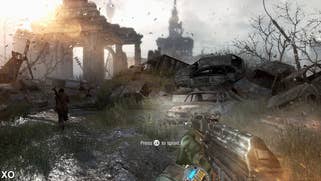




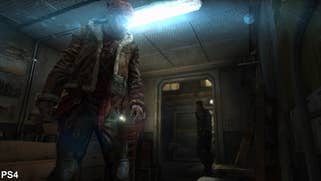
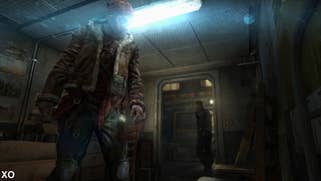



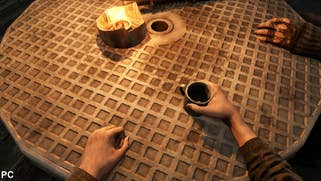

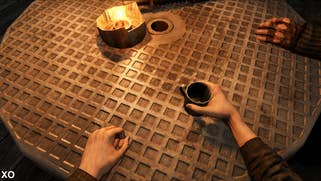
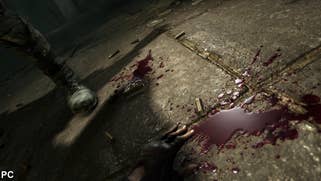
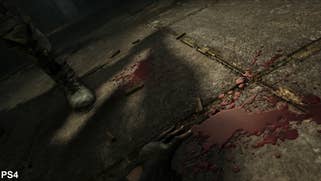
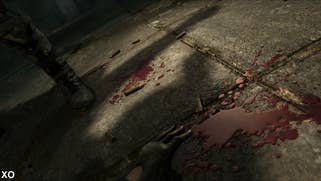
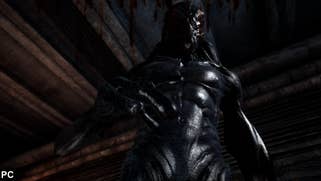
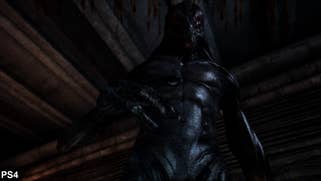
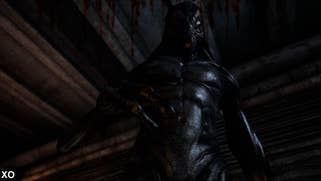
We've already covered console performance on both games and have little more to add bar some technical notes. Suffice to say that both Xbox One and PlayStation 4 do a phenomenal job of maintaining the target 60 frames per second update, no matter how intense the action.
Both implement adaptive v-sync technology - that is, the game locks at 60fps but will allow screen-tearing should the frame-rate drop beneath. When we first discussed the Redux with Deep Silver, the firm reckoned that the game held its lock 99 per cent of the time. In actual fact, it is considerably more consistent than that, with noticeable screen-tear so rare and so fleeting that it barely warrants mention.
One small technical note concerns a constant tear at the very top of the screen on both PS4 games, tucked into the overscan area and thus invisible on many screens and mostly unnoticeable on others, unless you're actively eyeballing for it. It's a curious one - some games flip the framebuffer late in order to give themselves some flexibility on rendering time (mostly to reduce input lag - why wait another 15ms for a new frame if you can render it 1ms later?), but the PS4 Metro titles stick doggedly to their 16.67ms refresh. It's a technical curiosity and nothing more really, but worth pointing out for those wondering why there's a tear on every one of our PS4 shots.
Alternative analysis:
Metro Redux - the Digital Foundry verdict
Both PlayStation 4 and Xbox One versions of Metro Redux successfully manage to transplant the most crucial elements of the high-end PC experience onto significantly cheaper hardware, in the process offering an enormously improved experience compared to the existing last-gen console versions of the game. There are clearly some areas where the Metro titles remain rooted in the last generation (character animation especially) but what's surprising is just how well these games hold up compared to modern day next-gen releases. Combine the upgrades with the enticing price-point and it's a compelling proposition for both newcomers and console double-dippers.
In terms of actual remastering work, Metro 2033 is clearly the star of the show - it plays better, it looks better and now feels like more of a contemporary match for its sequel. Last Light's enhancements are welcome, but the overall feel of the game remains largely unchanged from its original PC release. If you already own all of the DLC, a PC upgrade is going to be difficult to justify, but the option remains to just buy one of the older titles or to simply sit this one out if you don't feel that the Redux offers value. As it is, even freebie and Humble Bundle keys can be upgraded at a 50 per cent discount per game. Whether this represents value to you is something only you can decide - Deep Silver has already laid out its reasons for the Redux titles not being available as DLC for the original releases. The biggest problem Deep Silver faces in selling the PC Redux (PC in particular) is the proliferation of dirt-cheap deals on the original versions.
Perhaps the biggest takeaway we have with Metro Redux is the seeming ease with which 4A Games was able to bring its existing work - in its enhanced form - onto the Xbox One and PlayStation 4, after just four and six months respectively of hands-on time. Our recent tech interview with the developer suggests only better things to come. There's talk of sandbox gameplay, for example. Could it be that the next-gen Metro will give us the entire subterranean network to explore? Whatever 4A is cooking up for its first, built-from-the-ground-up next-gen title, we can't wait to see it.
Additional reporting by John Linneman.











